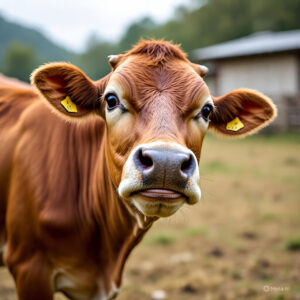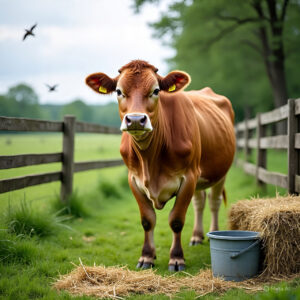Introduction
Starting to build a goshala is a noble step. A goshala empowers cows and communities. It can support livelihoods and eco practices. This guide will show you how to start a goshala. It covers planning, setup, regulations, and management.
What Is a Goshala?
A goshala is a cow shelter. It provides food, shelter, and care. It protects old or unproductive cows. It also supports eco-friendly farming. This guide helps you create a successful goshala.
Why Start a Goshala in 2025?
Government support is stronger today. Cow welfare gets recognition. Demand for organic cow products is rising. Goshala-based tourism is growing too. Religious and social sentiment is favorable.
Step 1: Define Your Purpose
Decide your goshala’s core purpose. Is it welfare-focused or business-based? You can integrate tourism or organic farming. Clear purpose guides structure and budget.
Step 2: Find the Right Land
Select land near your local area. Check soil for drainage. Ensure water supply access. Zoning must allow animal shelters. Prefer rural or semi-rural locations.
Step 3: Legal Structure & Registration
Register as a trust, society, or NGO. Choose nonprofit or industry model. Apply for charity tax exemptions if needed. Register with Animal Welfare Board of India if applicable.
Step 4: Basic Infrastructure
Design cow sheds with proper ventilation. Build open yet shaded areas. Add separate zones for sick cows. Include a storage area for feed and medicine. Ensure clean drinking water access.
Step 5: Cow Procurement
Start with 5–10 local breeds. Consider unproductive or retired dairy cows. Partner with local dairy farmers. Ensure health checks and records.
Step 6: Veterinary Care Setup
Establish periodic vet visits. Maintain vaccination and health records. Have isolation for sick animals. Keep first-aid tools and medicines handy.
Step 7: Feed & Nutrition
Use locally available fodder. Mix green and dry grasses. Provide mineral supplements. Include crushed grains if required. Align feed with cow age and health.
Step 8: Manure & Waste Management
Use dung for compost. Sell organic manure bags. Use urine for farm inputs. Keep the shelter litter-free. Manage waste to prevent pests.
Step 9: Staffing & Volunteers
Hire 1–2 skilled caretakers. Encourage volunteers. Provide basic training. Use interns from agricultural colleges. Promote community involvement events.
Step 10: Revenue Streams
List potential sources:
- Ghee, milk, or dung sales
- Compost and urine-based organic fertilizers
- Cow adoption schemes
- Donations and CSR funding
- Eco-tourism or educational visits
Step 11: Compliance & Licensing
Get dairy or FSSAI registration if selling products. Follow animal welfare guidelines. File CSR or NGO returns. Maintain hygiene and waste protocols.
Step 12: Marketing & Outreach
Create a website and social media pages. Write blog posts about cow welfare. Invite schools and visitors. Host workshops or webinars. Use internal links to related guides on your site.
Challenges Ahead
Climate and seasonal fodder availability. Vet costs may rise. License updates can take time. Fundraising efforts may need persistence. Volunteer management is critical.
Best Practices for Success
- Maintain hygiene daily
- Update cow health logs
- Engage the local community
- Organize annual health camps
- Build partnerships with dairies or NGOs
Case Study (Sample)
Mr. Rao started a goshala in 2023. He began with 6 cows on rented land. He added compost sales, cattle therapy, and school visits. He reached yearly revenue of $10,000.
Conclusion
Now you know how to start a goshala step by step. With proper care, it can serve cows and people. It aligns purpose with profit. It supports rural eco-livelihoods. Start today and make a change.
Welcome to nddb.coop | nddb.coop




